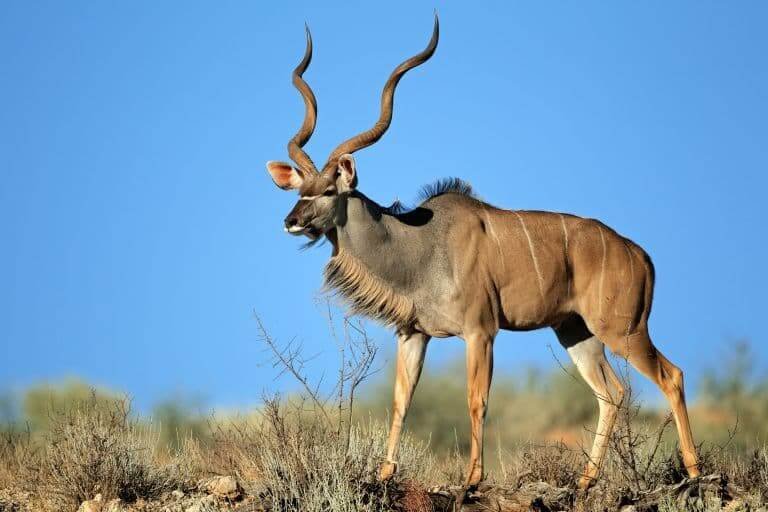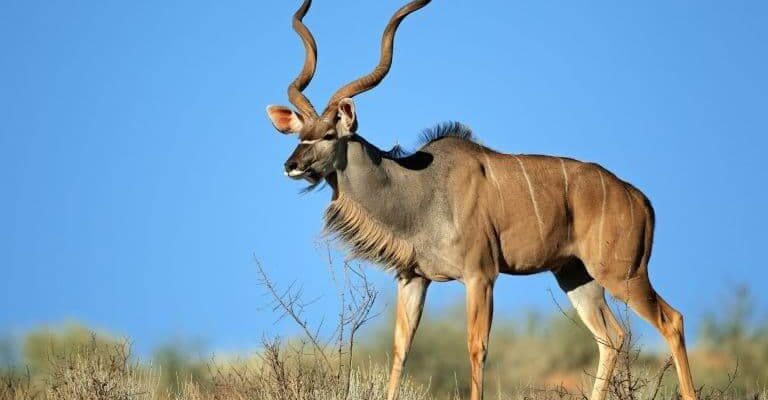
As we sip our coffee, let’s dive into this topic and uncover the state of the kudu population and what it all means for conservation efforts. Honestly, it’s essential to understand not just the numbers, but also the reasons behind them. Just like how we want to preserve nature’s beauty, we need to protect these creatures that play a vital role in their ecosystems.
Understanding the Kudu and Its Habitat
The kudu, particularly the greater kudu, is fascinating for several reasons. These animals thrive in diverse habitats ranging from dense woodlands to open plains. A kudu’s thick, greyish-brown coat camouflages them beautifully in their surroundings, helping them dodge predators like lions and leopards. You might say they have mastered the art of hide-and-seek!
The greater kudu (Tragelaphus strepsiceros) can weigh up to 700 pounds and stand as tall as 6 feet at the shoulder. Their impressive horns can grow to lengths of 6 feet in males, curling gracefully like a spiral staircase. This majestic appearance is just one reason why these animals are beloved by wildlife enthusiasts and photographers alike.
More than just a pretty face, kudu are important players in their ecosystems. They help maintain the health of vegetation by grazing on leaves and shrubs, which encourages new growth. This, in turn, supports a variety of other wildlife, creating a balanced environment. But with changing landscapes and human interference, their habitats are shrinking. This leads us to the pressing issue of their conservation status.
The IUCN Red List and Kudu’s Status
The International Union for Conservation of Nature (IUCN) plays a crucial role in monitoring the health of animal species worldwide. As it stands, the greater kudu is classified as “Near Threatened.” This means that while they are not considered endangered yet, they are on the brink and could become endangered if significant threats remain unaddressed.
You might be wondering what these threats are. The primary culprits include habitat loss due to agriculture, human settlement, and poaching. As people expand their territories, they encroach on the natural habitats of the kudu, leading to conflicts. Over time, this can result in fragmented populations, making it harder for these animals to reproduce and thrive.
Conservationists are working hard to raise awareness about the plight of the kudu. By studying their behaviors and environments, they can formulate effective strategies to protect these antelopes. It’s a complex puzzle, but every piece counts when it comes to ensuring the survival of the kudu.
Conservation Efforts: What’s Being Done?
So, what’s being done to help the kudu? There are various conservation programs in place aimed at protecting this species and its habitat. For starters, several national parks and reserves in Africa have been established specifically for wildlife protection. These protected areas ensure that kudu can roam freely without the threat of poaching or habitat loss.
In addition, organizations like the African Wildlife Foundation actively engage in community outreach to educate locals about the importance of biodiversity and the role that kudu play in their ecosystems. By involving local communities in conservation efforts, they not only raise awareness but also create sustainable ways for people and wildlife to coexist.
Another significant aspect of conservation is anti-poaching efforts. Rangers patrol protected areas to deter illegal hunting and ensure the safety of wildlife, including the kudu. These measures, combined with stricter regulations on hunting, are essential for maintaining and even increasing kudu populations.
The Role of Eco-Tourism in Kudu Conservation
Eco-tourism is another powerful tool in conservation efforts. When people travel to see animals like kudu in their natural habitats, it generates revenue that can fund preservation initiatives. Honestly, there’s nothing quite like witnessing a kudu in the wild, and more than just being a breathtaking sight, it contributes directly to their survival.
Travelers who visit African reserves often engage with local communities, learning about their cultures and the importance of preserving wildlife. This interaction raises awareness and fosters a sense of responsibility for the environment. Plus, it shows people that protecting nature can lead to economic benefits for communities.
On the flip side, eco-tourism must be managed carefully. Overcrowded areas can stress wildlife and lead to habitat degradation. Thus, responsible tourism practices are crucial to ensuring that the presence of humans does not undermine the natural beauty of the landscapes or the creatures that call them home.
What You Can Do to Help Kudu Conservation
Feeling inspired to make a difference? There are several ways you can contribute to kudu conservation, even from afar! Here’s what you can do:
- Support conservation organizations: Donations or volunteering with groups focused on wildlife protection can make a real impact.
- Spread the word: Use your social media platforms to raise awareness about the plight of the kudu and other endangered species.
- Practice responsible tourism: If you plan to visit Africa, choose eco-friendly tours that prioritize animal welfare and habitat preservation.
- Educate yourself and others: Knowledge is power! Learning about wildlife conservation can empower you to advocate for these beautiful creatures.
Each small action contributes to a larger movement. After all, conserving the kudu isn’t just about saving a species; it’s about preserving a piece of our planet’s rich tapestry of life.
Common Misconceptions About Kudu Conservation
There are often misconceptions surrounding the conservation of species like the kudu. One common belief is that they are not at risk because they are still seen in some regions. While it’s true that you might spot these animals in various parks, their population is not stable everywhere. Conservationists often highlight how local populations can vary dramatically.
Another misconception is that conservation efforts are solely the responsibility of governments or large organizations. In reality, every individual can play a part. Whether it’s advocating for sustainable practices in daily life or lending support to local initiatives, every action counts.
Let’s not forget that the fight to protect the kudu isn’t just about the animal itself; it’s about the ecosystems that depend on its existence. When you understand the interconnectedness of life, it becomes clear that protecting kudu helps safeguard many other species and the environments they share.
Wrapping It Up: The Future of the Kudu
In summary, while the greater kudu is currently classified as “Near Threatened,” there is still hope for their future. Active conservation efforts, community involvement, and responsible eco-tourism can do wonders for their populations.
It’s essential to stay informed and support initiatives that protect these iconic animals. As we move forward, let’s remember that every action we take—no matter how small—can contribute to a brighter future for the kudu and the rich biodiversity of our planet. With continued efforts, we can ensure that the beauty of the kudu continues to grace the African landscapes for generations to come.

